What It Was Like To Eat At The First Pancake House (Not IHOP)
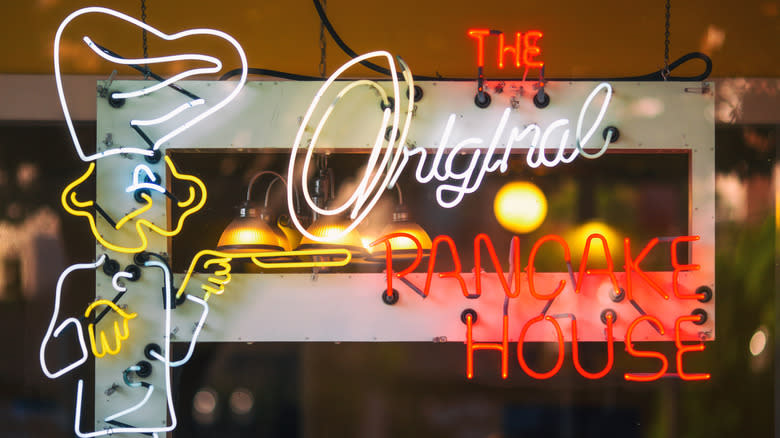
Keep your IHOP and your Denny's. Real breakfast aficionados know that the first and the best pancake house is where you'll find America's tastiest flapjacks. Creatively named The Original Pancake House, this restaurant chain has been around since 1953 (five years before IHOP got into the pancake game), and today boasts over 100 locations nationwide. As its tagline promises, it whips up light, fluffy, syrupy pancakes "as you like them." However, most of its patrons are there for its house specialties, including the Apple Pancake and the Dutch Baby.
Both equally indulgent (and wonderfully gargantuan in size), these are as popular today as they were in the 1950s. The Original Pancake House is renowned for its sense of nostalgia, keeping plenty of details the same as when it first opened its doors. In fact, resisting change is practically a company policy. "The trends never move us," its corporate chef once told Oregon Business. "When times are good [customers] want our sugar and when times are bad they want our sugar." But what was it like to actually dine at the restaurant in its nascency? Here are 10 things you may not have known about America's first pancake house back in the 1950s.
Read more: 22 Fast Food Breakfast Menus Ranked From Worst To Best
It Was Located In Portland
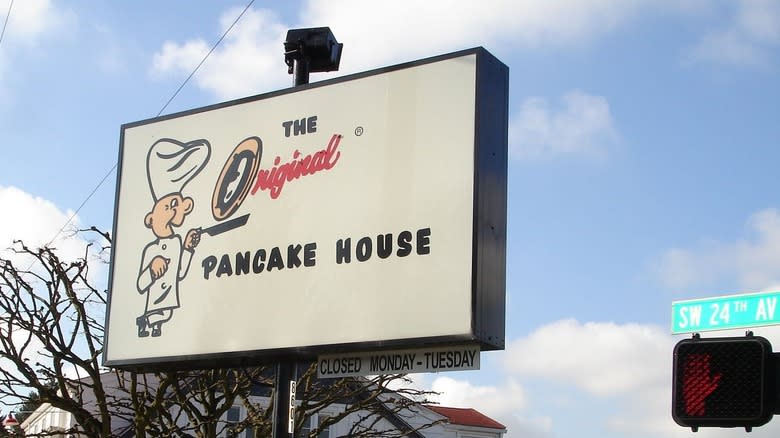
Today, The Original Pancake House has well over 100 restaurants coast-to-coast. But its legacy doesn't end there. Since the 1950s, it has also had locations in Canada, and restaurants have also opened in South Korea and Japan, where the first Asian outlet debuted in Kichijōji in 2013. However, if you were to say you were eating at the original Original Pancake House, you'd be in one place and one place only: Portland.
First opened on June 30, 1953, the first Oregon restaurant was the brainchild of chef Les Highet and Erma Hueneke -- both of whom had extensive experience in the culinary world. More like a house from the outside than a restaurant, the OG restaurant had the same cozy look as many mom-and-pop locations in the 1950s.
While the duo never planned to build a franchise, demand grew at a rapid rate. "It's interesting because my grandfather thought it would be one restaurant in Portland, but they started franchising before it was even a thing," Highet's granddaughter, Elizabeth Highet, told Retail Merchandiser. The first franchised restaurant was opened by Hueneke's brother in Salem, Oregon in 1955, but as more people expressed interest in running their own version of the restaurant, outlets soon started popping up across the country (and haven't really stopped since). However, it's the mothership off of Southwest Barbur Boulevard that remains the most deserving of The Original Pancake House moniker.
The Co-Founder Himself Whipped Up Pancakes
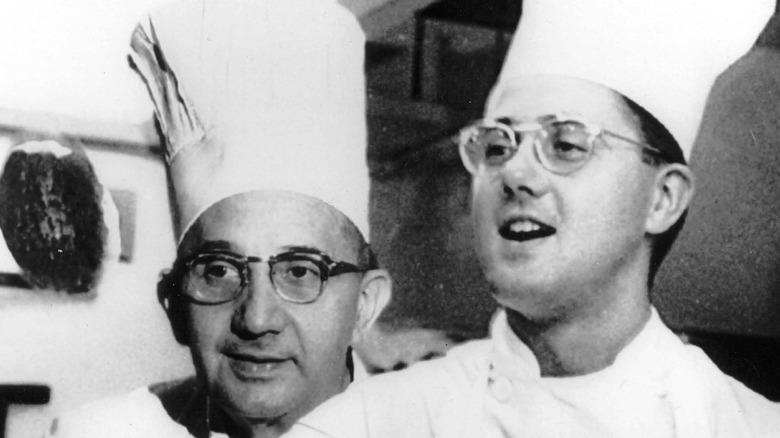
Lester "Les" Highet was already a mainstay on Portland's foodie scene when he and Hueneke launched The Original Pancake House. Having worked his way up the restaurant ranks, he stepped right into the role of chef after opening his own, flitting between the griddle and the restaurant floor to talk with diners (of which there were many, if firsthand tales of the restaurant are anything to go by). He's the man responsible for the restaurant's iconic Dutch Baby -- the menu's souffle-esque mountain of a pancake, baked in the oven and topped with lemon, whipped butter, and powdered sugar.
Highet's work remains a huge part of the franchise today. If you visit the Portland location, you're sure to see pictures of him in his element -- whipping up pancakes for patrons in the restaurant's kitchens, complete with a chef hat. The bulk of his recipes remain untouched, and they're used at locations nationwide. The Highet family (who still operate the franchise) are full of praise for Highet's work decades later, with his son and former restaurant chef Ron Highet proudly telling Oregon Business, "The only thing we have going for us is the quality of the food. We're so good it allows us to be arrogant."
Housewives Powered The Menu
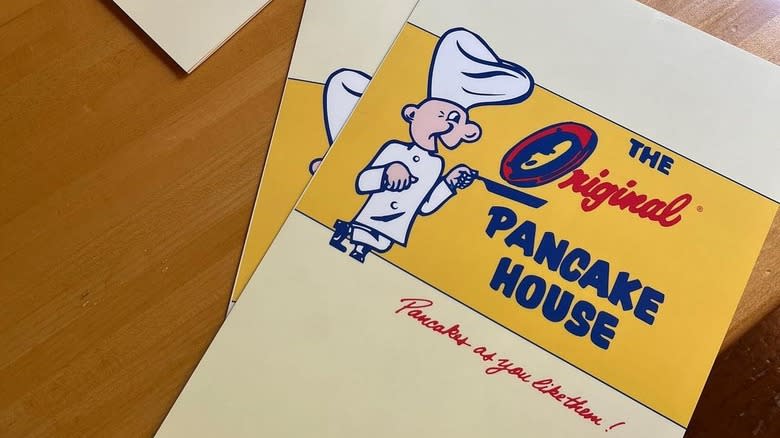
He may be the man responsible for perfecting the menu, but Les Highet isn't the only one to thank for decades of flawless food at The Original Pancake House. Credit is also owed to a 1950s demographic that knew comfort food better than anyone: housewives.
When putting together the menu, Highet and Hueneke pored over submissions from homemakers who drew on traditional pancake recipes from their own nationalities. The best of the best made it to a lineup featuring the likes of Danish Kijafa Cherry Crepes (three crepes topped with Montmorency cherries, sweet Kijafa sauce, and powdered sugar) and The Tahitian Maiden's Dream (a crepe filled bananas soaked in Triple Sec, sherry and brandy, sour cream, and apricot sauce).
Just like the dishes served up by the housewives of the 1950s, every dish approved for The Original Pancake House menu stuck to high-quality, wholesome ingredients. That means no trans fats or high-fructose corn syrup, and only 93 score butter, pure 36% whipping cream, and fresh grade AA eggs. Exactly the way mom makes it.
It Was Known By A Different Name
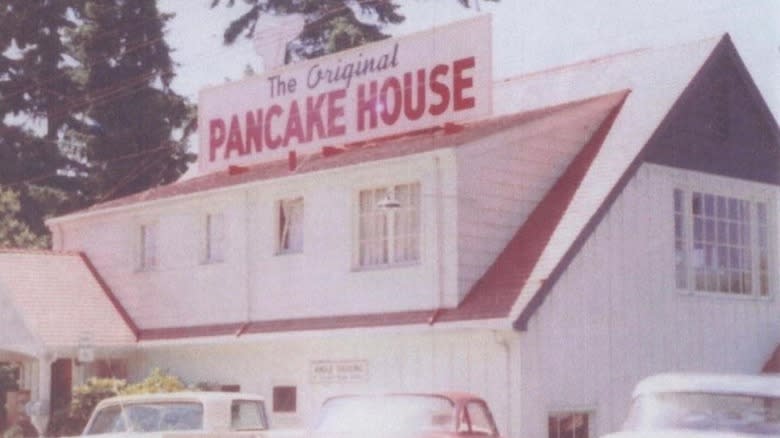
The Original Pancake House has always been the original pancake house. However, just like KFC, McDonald's, Dunkin', and plenty of other food chains, it previously went by a different name. When Highet and Hueneke opened the first location in 1953, it was known as The Pancake House (which didn't exactly do its first-and-best status any favors).
As the franchise began to branch out into franchises, it decided to tweak its name in 1958 to give itself stronger brand recognition region-wide. By this point, pancake houses were popping up everywhere. IHOP joined the pancake party that same year, while Denny's opened its first location a year after The Original Pancake House's Portland restaurant. Asking your friend, "Do you want to go for breakfast at the pancake house?" was becoming far too vague. Five years after it first opened, patrons needed to know that this wasn't just any old pancake house; this was The Original Pancake House. So, a brand new legacy was born.
The Restaurant Looked The Same
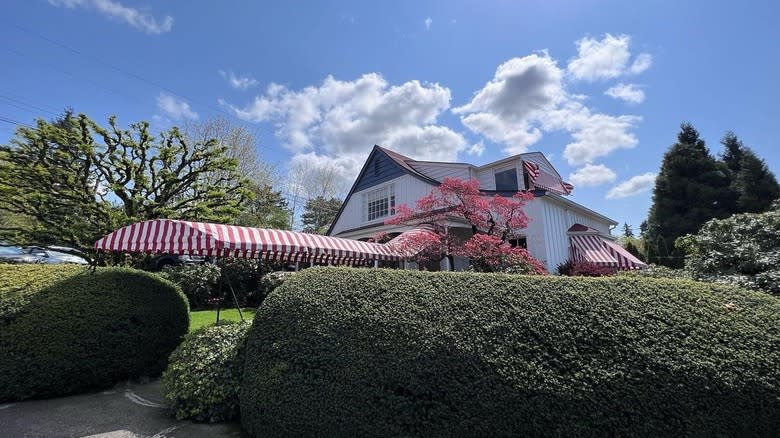
In the modern day, The Original Pancake House gives its franchisees the freedom to model their own restaurants how they see fit. However, as the owner of The Original Pancake House's Anaheim location told The OC Register, most try to embrace the nostalgia factor. "They all have the appearance of being a mom-pop restaurant," Jerry Finkelstein told the publication. "We try to make it feel like it was when the chain started in the 50s, when everything had a warmer feel."
He's not wrong. The Original Pancake House's Portland location looks very much the same today as it did in 1953. If you dropped by in the Nifty Fifties, you would have eaten in the same 72-seat dining room (which could easily be mistaken for your grandmother's dining room -- in the best possible way -- considering the building apparently used to be a house), complete with pinewood paneling and a long communal table that you may have ended up sharing with another family. From the outside, The Original Pancake House was just as homely, with a sloped roof, roomy terrace, and instantly recognizable red-and-white-striped awning that remains today. If it ain't broke, don't fix it.
You Could Order Takeout Chicken
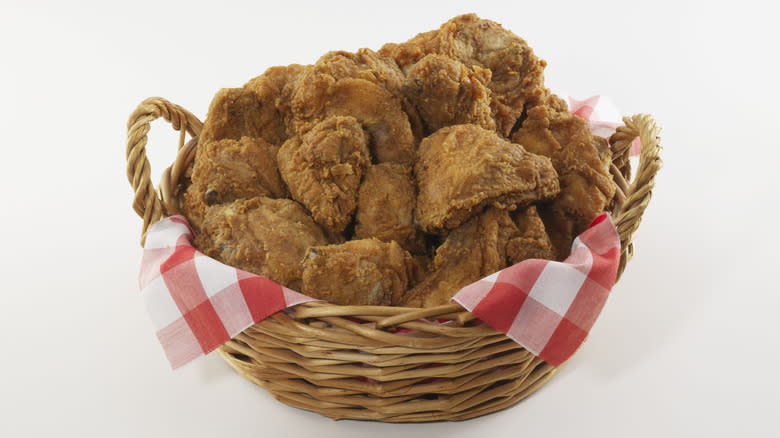
Pancakes were, of course, the number one priority. But if you were looking for something with a little extra protein in the 1950s, you also had the option to grab some fried chicken to go from certain outlets.
Vintage menus from the decade brag about some diners in a rush having the option to take home Fosters Fried Chicken. "No order is too big or too small," the restaurant claimed. "From a box lunch for one to a Banquet for a thousand, Fosters Farm-Fried Chicken is the perfect entrée." Prices weren't too shabby, either. A bucket of chicken -- containing 14 pieces, a pint of Old Fashioned Country Gravy, and 10 buttermilk biscuits to feed a family of five -- set diners back just $3.90. Meanwhile, a box with three pieces of chicken, your choice of "French fried potatoes" or potato salad, and two buttermilk biscuits was only $1.10. What a bargain!
Pancakes Cost Just $0.50
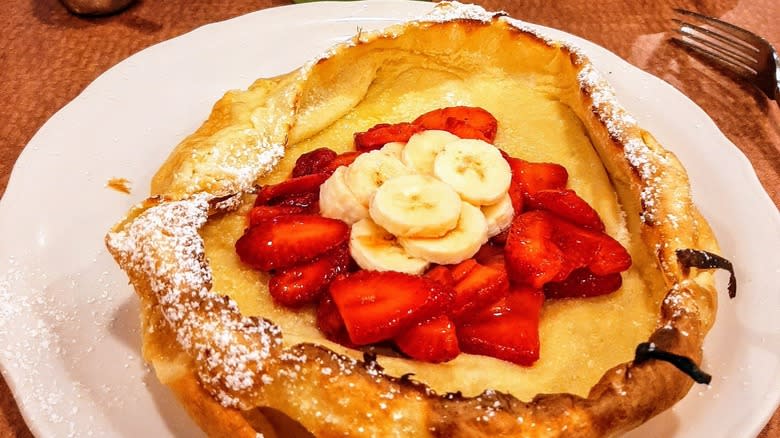
Speaking of affordable dining, breakfast at The Original Pancake House didn't exactly break the bank back in the 1950s either. While prices varied depending on the item -- and we should probably bear in mind that inflation does exist, and we're very much looking at this through rose-tinted glasses -- it's hard not to feel slightly jealous when you read an old menu advertising a stack of buttermilk pancakes for $0.50.
Other menu items were just as affordable. If waffles are more your thing, you'd have paid just $0.45 for a Golden Tender Waffle. You could order the most expensive and luxurious waffle on the menu, the Hickory Smoked Ham Waffle with a side of applesauce, and still take home change for $1. The cheapest of all was the coffee at $0.10 a cup (for comparison, as of 2024, the Portland outlet of The Original Pancake House charges $4 per cup).
If you wanted to splash out in the 1950s, the most expensive item on the menu was the Hawaiian Ham Steak (a "thick slice of smoked-cured ham garnished with a thick slice of pineapple, grilled banana with 3 buttermilk pancakes), which was $1.85. Adjusted for inflation, that's $21.50.
Patrons Were Spoiled For Choice
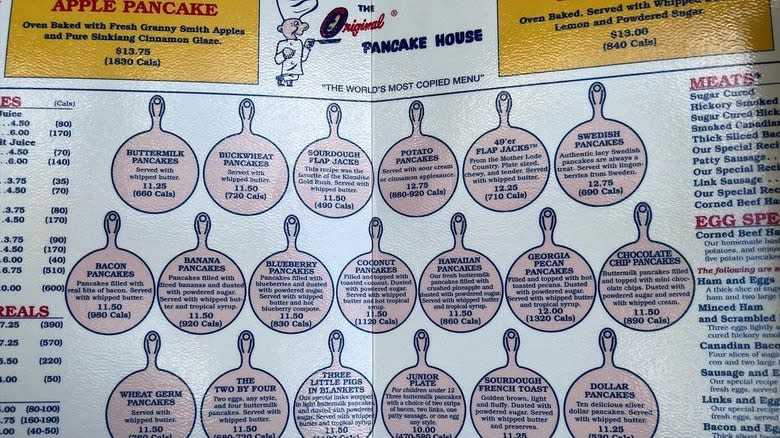
Back in the 1950s, The Original Pancake House served up pancakes in every sense of the word. Standard buttermilk pancakes were just the beginning, with the rest of its menu stuffed with 120 different kinds of pancakes, according to the Washington State Archives.
If your culinary ambitions stretched beyond syrup and butter, you could order from a mix of sweet and savory specialties sourced from all over the world. This lineup included the likes of Technicolor Pancakes (which sounds potentially too fun for our stomachs, if we're being honest), Welsh crempogs (thick pancakes made with a dash of vinegar), cabbage pancakes (self-explanatory), Peking doilies (aka Mandarin pancakes), and curried tuna pancakes. Every dish was made fresh to order and was, we assume, equally delicious. However, considering the fact a lot of these pancakes are nowhere to be seen on The Original Pancake House menus today, some must have proved more or less popular than others over the decades.
The Food Was A Science
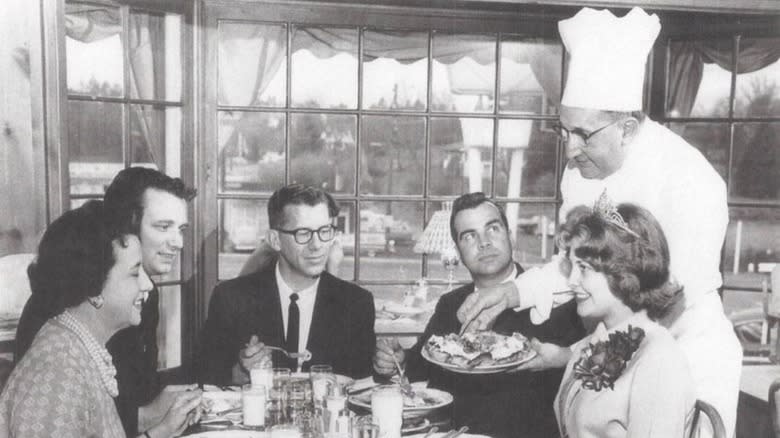
A lot of chefs like to brag that their food is a careful science. At The Original Pancake House, however, food was quite literally a science. Doris Highet -- the wife of co-founder Les Highet -- was a physician and biochemist who has been described as the restaurant's secret weapon. She had a deep professional understanding of the role enzymes play in cooking and baking, which she used to devise a new way to break down the gluten in pancake batter.
Armed with the knowledge plenty of similar breakfast restaurants lacked, Highet turned to his wife's enzyme expertise to come up with the perfect pancake recipe. He used a combination of enzymes, an old-fashioned sourdough yeast, and flour with a high concentration of gluten to formulate the lightest, fluffiest, and tastiest pancake possible. It was the enzymes, in particular, that prevented its pancakes from turning out rubbery or dense. Over 70 years later, these are the same recipes used in each Original Pancake House restaurant. These recipes are considered so important that the only people allowed full access are franchise owners and prep cooks. That's proof alone that the Highets really did get this science down to a tee.
Getting A Table Was Extremely Tough
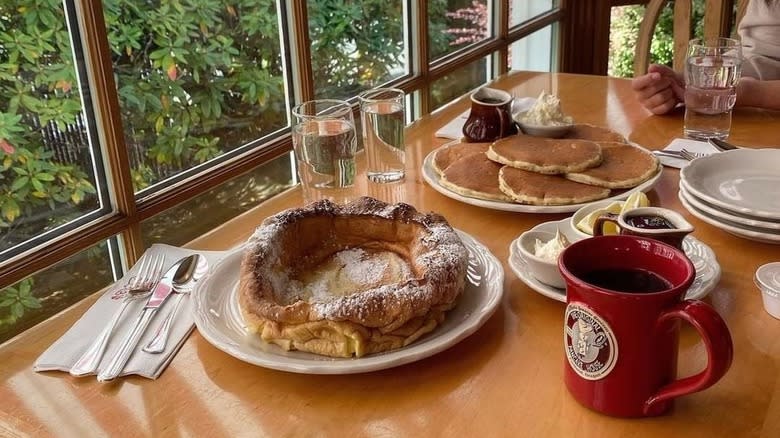
Some things never change — one of them being that it has always been a challenge securing a table at The Original Pancake House. The original Portland location was a bonafide overnight success, generating lines that stretched outside the restaurant doors within just two weeks of opening.
For those who remember the early days of the first restaurant, this success was anything but short-lived. Longtime Portland residents have described it as one of the most popular joints in the entire city and remember crowds gathering in the early morning to try and nab a table. "This was, hands down, one of the most [popular] restaurants in the greater Portland area for several decades," explained one Yelp reviewer. "As many have noted, you'll still encounter a 1-hour (or longer) wait for breakfast on the weekends to this day."
Even now, the restaurant doesn't take reservations, with regular patrons describing a Hunger Games-esque situation while trying to grab a table. If you've experienced this chaos for yourself, then it's easy to imagine the kind of scenes that unfolded outside The Original Pancake House doors early on a Saturday morning in the 1950s.
Read the original article on Mashed

